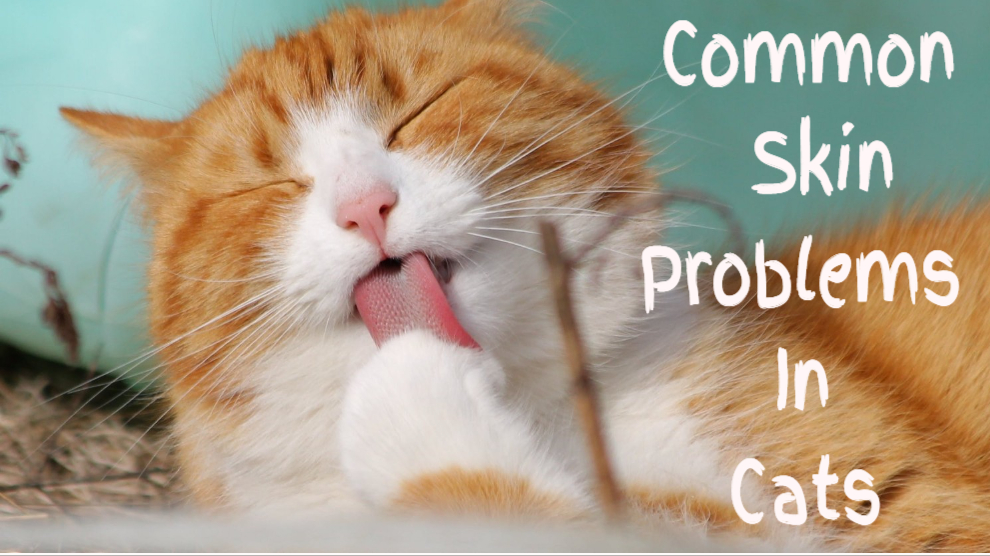Understanding and Addressing Cat Skin Problems: A Comprehensive Guide
Introduction
Cats often face various skin issues that can lead to discomfort and distress. Understanding the symptoms and potential causes is essential for timely intervention. This guide explores common skin problems in cats, their causes, and remedies, emphasizing the importance of veterinary care.

Recognizing Symptoms of Skin Problems
Identifying skin issues in cats involves keen observation of their behavior and physical condition. Common signs include excessive scratching, scabs, hair loss, and changes in skin texture. The locations of irritation, such as the neck, head, and base of the tail, can provide clues about the underlying issues. For instance, itching around the neck may suggest flea infestations, while localized hair loss can indicate allergies or infections. Other symptoms to watch for include redness, swelling, or the presence of sores. Cats may also exhibit behavioral changes, such as increased irritability or withdrawal, as they experience discomfort. Immediate recognition of these symptoms is crucial; untreated conditions may worsen, leading to infections or further complications. Regular check-ins with your cat, along with monitoring their grooming habits, can help catch any emerging issues early.
Common Causes of Skin Issues
Skin problems in cats can arise from several sources, including fleas, allergies, and environmental factors. Flea allergies are particularly common and can cause severe itching and discomfort, often leading to secondary infections if left untreated. Even a single flea bite can trigger a significant allergic reaction in sensitive cats. Allergies can be triggered by various factors, including dietary changes, new cleaning products, or even seasonal pollen. Some cats may develop sensitivities to specific ingredients in their food or to substances in their environment. Understanding these causes is key to addressing the root of the problem. Environmental irritants, such as dust mites or mold, can also contribute to skin issues. Regularly cleaning your cat’s living space can help reduce exposure to these allergens.
The Importance of Veterinary Care
While home remedies can sometimes provide relief, consulting a veterinarian is often necessary for accurate diagnosis and treatment. A vet can conduct a thorough examination, identify underlying issues such as infections or parasites, and recommend appropriate medications or treatments tailored to your cat’s specific needs. It’s essential to communicate openly with your veterinarian about your cat’s symptoms and any treatments you’ve tried. Additionally, discussing financial concerns may lead to payment options or lower-cost solutions. Many clinics offer payment plans or may direct you to local resources for affordable care. Remember, early intervention can prevent more severe problems down the line, ensuring your cat receives the best possible care.
Home Remedies and Initial Treatments
Before visiting a vet, there are some home remedies that may provide relief for your cat’s skin issues. Bathing your cat with mild dish soap can help remove fleas and soothe irritated skin. Be sure to use a soap that is safe for pets, as some human products can be harmful. Using a flea comb during baths can assist in eliminating fleas and their eggs, providing immediate relief from itching. Additionally, applying a soothing topical treatment, such as aloe vera gel, may help reduce inflammation and promote healing. However, it’s crucial to avoid over-the-counter treatments that may be harmful or ineffective. Always check with your vet before trying new products on your cat, especially if they have pre-existing conditions or are on medication.
Managing Allergies and Skin Irritations
If you suspect allergies are contributing to your cat’s skin issues, observing their environment and diet is crucial. Noting any changes, such as new food, cleaning supplies, or seasonal pollen, can help identify potential triggers. Switching to hypoallergenic cat food or using gentle, unscented cleaning products may alleviate some symptoms. Regular grooming is also vital in managing skin irritations. Brushing your cat can help remove loose fur and dander, reducing the amount of allergens in their environment. Additionally, regular bathing can help wash away allergens that accumulate in your cat’s fur. However, it’s essential to strike a balance, as excessive bathing can strip natural oils from their skin, leading to further irritation.
Preventive Measures for Skin Health
Preventive care is vital in maintaining your cat’s skin health. Year-round flea and tick prevention is essential, as even one bite can trigger allergic reactions. Discussing preventive treatments with your vet can help you choose the best options for your cat’s lifestyle. Regular grooming helps remove loose fur and debris, reducing the risk of skin issues. Consider investing in quality grooming tools that suit your cat’s coat type. Additionally, creating a stress-free environment and providing mental stimulation can minimize behaviors such as excessive grooming, which can exacerbate skin problems. Interactive toys and scratching posts can help keep your cat engaged and less prone to stress-related grooming behaviors.
When to Seek Additional Help
If your cat’s condition does not improve with home treatment or worsens, it’s essential to seek veterinary assistance. Persistent symptoms could indicate more serious conditions, such as scabies, skin infections, or autoimmune disorders. A veterinarian can perform diagnostic tests to determine the underlying cause and recommend appropriate treatments. If finances are a concern, consider contacting local shelters or veterinary colleges for resources or low-cost veterinary services. Many communities have programs designed to assist pet owners with financial difficulties, ensuring that every pet receives the care they need. Don’t hesitate to reach out for help; your cat’s health and well-being should always come first.
Conclusion
Cat skin problems can be distressing for both pets and their owners. Early recognition and intervention are key to effective treatment. By understanding common causes, exploring home remedies, and prioritizing veterinary care, you can help ensure your cat remains healthy and comfortable. Regular monitoring of your cat’s skin and behavior, along with preventive measures, can significantly improve their quality of life. Remember, a happy, healthy cat is a joy to have in your home.